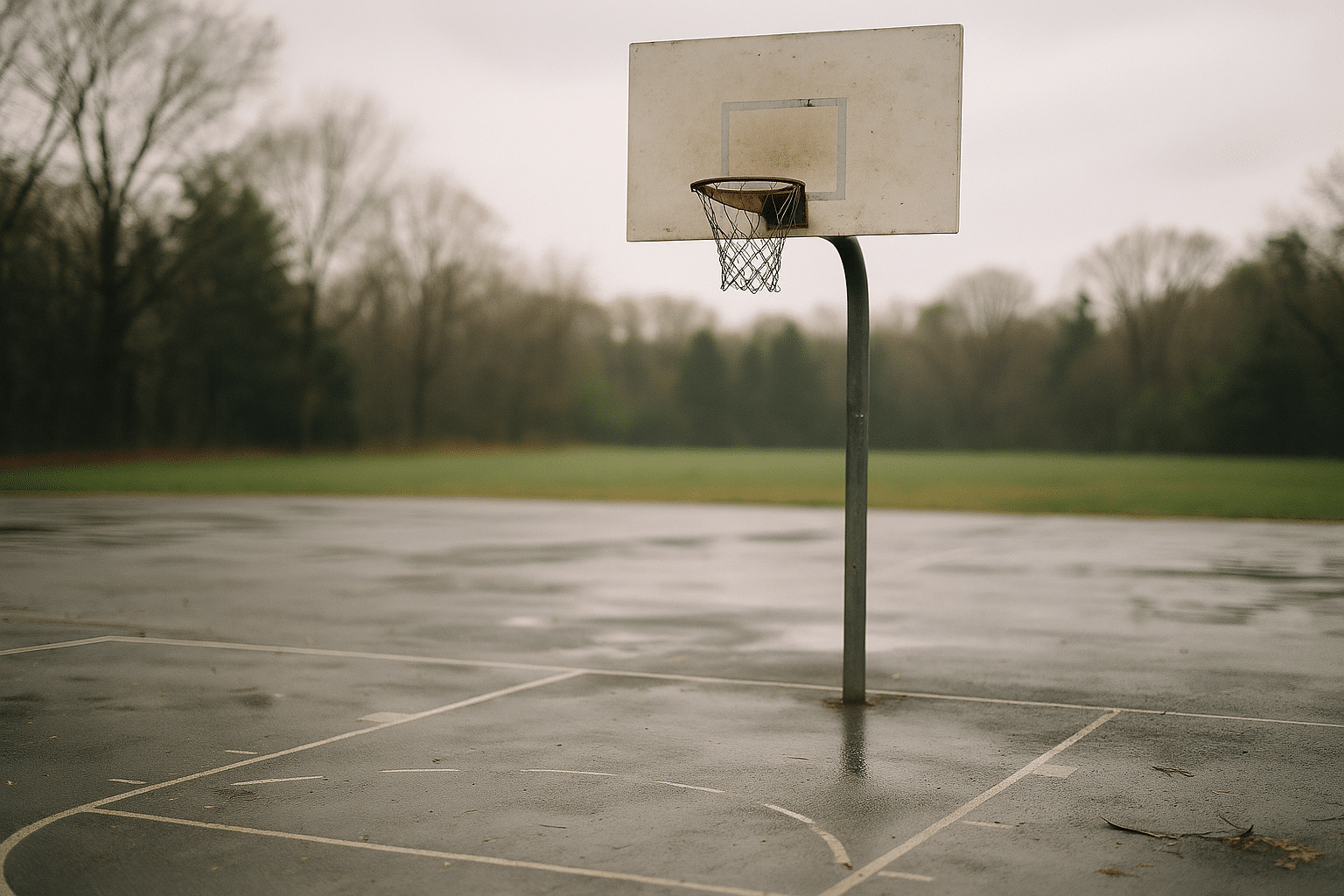
Basketball Fundamentals: Skills, Rules, and Training Tips for All Levels
Outline
– Introduction: Why fundamentals matter across ages and levels
– Section 1: Core skills—dribbling, passing, shooting, and footwork
– Section 2: Rules and game flow—violations, fouls, and scoring
– Section 3: Training and conditioning—safe progressions and sample plans
– Section 4: Strategy and decision-making—offense, defense, and spacing
– Section 5: Conclusion—how to build a sustainable path for improvement
Introduction
Basketball blends speed, coordination, and teamwork into a fast-moving game that rewards preparation. Whether you are learning to dribble for the first time or sharpening a competitive edge, fundamentals unlock the court. They improve confidence, reduce injury risk, and create a shared language for teammates. This article gathers practical, neutral guidance on skills, rules, conditioning, and strategy so you can train with purpose. From simple at-home drills to court geometry and defensive positioning, you will find actionable insights designed to grow with your experience.
Core Skills That Travel: Dribbling, Passing, Shooting, and Footwork
Great play starts with reliable skills. Think of basketball as a craft: your ball handling is the toolkit you carry, your footwork the hinges that make the doors swing, and your shot the signature you sign at the end of a possession. The goal is not flashy tricks; it is repeatable movements that stand up under pressure.
Dribbling: The foundation is control at varied speeds and directions while keeping the ball below the waist and the eyes up. A strong stance (hips back, chest tall, knees soft) steadies your base. Begin with stationary dribbles—pound dribbles at hip height, then knee height, then low, switching hands every 10–20 reps. Add changes of direction: crossovers, between-legs, and behind-the-back, focusing on balance and ball protection. Progress to walking and jogging dribbles with head turns—glancing left or right on a cue to simulate scanning the floor.
Passing: Precision passing shortens possessions and widens angles for teammates. Practice chest, bounce, and overhead passes by aiming for a consistent target on a wall or a partner’s chest. Emphasize stepping into the pass and finishing with thumbs down on release for cleaner backspin. Build decision speed with passing on a command (for example, a partner calls a number that matches a cone color). As your control improves, add one-hand push passes off the dribble to thread tight windows when defenders overplay.
Shooting: Good shooting lives in rhythm. Align your stance (toes and shoulders comfortable, not forced), keep your shooting hand under the ball, and your guide hand quiet. A fluid dip and smooth knee-hip-ankle extension promote a consistent arc—many players find a trajectory around 45–55 degrees produces a soft landing on the rim. Track three numbers to anchor progress:
– Form shots (close range): strive for 70–80 percent makes
– Mid-range spots: aim for 50–60 percent as a checkpoint
– Free throws: stabilize above 70 percent as a foundation
Use “swish or short” feedback: if long or left-right misses appear, adjust aim point (front rim for control, back rim to add power) and check your follow-through.
Footwork and finishing: Off two feet, practice jump stops and pivots (front and reverse) to avoid travels. Off one foot, rehearse stride stops into layups and floaters. Around the basket, switch finishes based on help defenders:
– Inside hand layups to shield with your body
– High off-glass angles to neutralize shot contests
– Two-foot power finishes when contact is likely
When fatigue rises, fundamentals slip first—so keep reps crisp and sets short to preserve quality.
Rules and Game Flow: The Framework That Shapes Play
Understanding the rules turns random motion into intentional action. While exact regulations vary by age group and league, the core structure remains consistent: two teams, five players on the floor per side, and a court divided by a midline with a three-point arc, free-throw lane, and restricted area near the rim. Scoring follows a simple ladder: field goals inside the arc count as two points, shots beyond the arc count as three points, and free throws are one point each.
Violations govern ball control and movement. Common examples:
– Traveling: moving your pivot foot illegally or taking extra steps before a dribble
– Double dribble: stopping the dribble, then dribbling again
– Carrying: rotating the hand under the ball and pausing its flight
– Three seconds: an offensive player lingering in the lane too long without actively clearing
– Backcourt: returning the ball to the backcourt after establishing possession in the frontcourt
– Five-second counts: closely guarded situations or inbound time limits, depending on ruleset
Teams learn to manage these by drilling pivot discipline, using jump stops in traffic, and making quick entry/exit cuts through the lane.
Fouls regulate contact and protect safety. A personal foul includes illegal body contact that disadvantages an opponent—hand checking, blocking that disrupts a legal path, pushing on rebounds. A shooting foul results in free throws; non-shooting fouls often become sideline or baseline inbounds unless the defense has accumulated enough team fouls to trigger bonus free throws (bonus rules and exact thresholds vary). Offensive fouls, including illegal screens or charges, do not produce free throws but result in a turnover.
Game timing differs across levels: many games are split into halves or quarters with short intervals, and various ages use different shot-clock lengths or none at all. Player rotations and timeouts also vary but share a common aim—maintain flow while giving teams opportunities to strategize. Understanding substitution patterns helps coaches manage fatigue and foul trouble.
Referees apply advantage–disadvantage principles: if contact affects play outcome, it is more likely to be called. Players can minimize risky contact by mastering verticality (jumping straight up to contest), arriving early to establish legal guarding position, and keeping hands visible. Smart teams also “play the whistle”—they balance assertiveness with control, continuing through contact but staying prepared for either outcome. When you grasp the framework, possessions feel less chaotic, and your decisions grow faster and cleaner.
Training and Conditioning: Safe Progressions That Build Durable Athletes
Consistent progress comes from planned, sustainable training. The pillars are movement quality, strength, agility, and recovery. Before chasing intensity, earn stability and control across basic patterns: squat, hinge, lunge, push, pull, and brace. These patterns build the chassis that supports on-court skills.
Warm-up: Begin sessions with 8–12 minutes of gradual ramp-up:
– Light aerobic work (skips, jogs, jump rope) to increase temperature
– Mobility flows (hip openers, thoracic rotations, ankle rocks)
– Activation (glute bridges, band pull-aparts, calf raises)
Finish with 2–3 short accelerations or closeout steps to cue court speed.
Strength and power: Two to three total-body sessions per week are effective for many athletes. Emphasize controlled reps and neutral spine:
– Lower body: split squats, goblet squats, hip hinges, step-ups
– Upper body: push-ups, rows, overhead presses with modest loads
– Core: anti-rotation presses, dead bugs, side planks
Introduce low-volume plyometrics (skips, pogos, medicine-ball throws if available) once landing mechanics are solid. Allow at least 48 hours between intense jump days, especially for developing athletes.
Conditioning and agility: Basketball demands repeated short bursts with active rest. Interval formats build capacity efficiently:
– Court shuttles: 15–30 seconds on, 45–60 seconds off, 8–12 reps
– Defensive slides: 3–5 sets of 20–30 meters focusing on hip level and foot quietness
– Closeout–rebound–outlet sequences: combine skill and conditioning for realism
Keep perceived exertion around 6–8 on a 1–10 scale during conditioning blocks to balance quality and fatigue.
Skill-integrated drills: Blend ball handling with movement decisions:
– Two-cone change-of-direction crossovers with passing to a target
– Catch–rip–one-dribble pull-ups from both wings, tracking make rate
– Finishing ladder: inside hand, outside hand, high glass, then two-foot power through light contact (pads or safe body positioning)
Recovery and safety: Hydrate before training (roughly 3–7 ml/kg body mass in the 2 hours prior, adjusting for climate). After intense sessions, a light snack with carbohydrates and protein supports recovery. Use a cool-down with easy jogging and breathing work, then gentle stretching. Red flags that warrant reducing load or seeking professional guidance include persistent joint pain, dizziness, or sharp muscle strains. Smart training expands capacity without gambling with health, and steady attention to mechanics produces durable performance gains.
Strategy and Decision-Making: Spacing, Roles, and Defensive Identity
Strategy is the connective tissue between skills and outcomes. The ball may move fast, but the geometry is thoughtful: space the floor to stretch defenders, drive into gaps, and create high-value shots. On offense, many teams shape spacing into an arc around the perimeter with one player patrolling the interior or short corner. This alignment—sometimes four players outside and one inside, sometimes five out—creates driving lanes and clear post seals.
Offensive reads begin with the advantage chain: create an edge, maintain it, convert it. A ball screen, a hard backdoor cut, or a quick swing pass can pull a defender out of position. Once a defender is behind the play, the next pass must keep the advantage alive until someone finishes at the rim or knocks down an open jumper. To sharpen these reads, practice small-sided games (for example, 3-on-3 to a restricted space) where every pass and cut has purpose.
Keys to effective offense:
– Pace with poise: push the ball when numbers favor you; pull it out when spacing is poor
– Two-on-the-ball solutions: when a second defender helps, immediately find the open teammate
– Paint touches: drive or post to force help, then kick for cleaner looks
– Shot selection: prioritize layups and open threes over tightly contested long twos when possible
– Offensive rebounding balance: send one or two crashers and keep others back to protect against the fast break
On defense, two broad approaches dominate: guarding a player (man-to-man) or guarding space (zone). Great defenses communicate early, loudly, and specifically—“ball,” “help,” “screen left,” “switch.” Containment on the perimeter keeps the ball out of the paint; if the ball enters, rotation rules must be automatic. For example, on a drive from the wing, the low defender steps up to challenge, the next defender “sinks and fills” to cover the vacated space, and a teammate bumps down to box out a cutter. Drill these sequences slowly at first, then with a shot clock or time cue to simulate pressure.
Keys to effective defense:
– Stance and slides: hips low, chest up, feet active without crossing
– Closeouts: sprint two-thirds, then chop steps with high hands to contest without fouling
– Verticality: jump straight up near the rim to avoid body contact fouls
– Rebounding: hit–find–pursue—make contact, locate the ball, then go get it
– Transition defense: designate a safety who sprints back on the shot; others bust to the lane line to stop the ball
Analytics-minded teams often track expected points by shot type: shots at the rim and uncontested threes generally yield more per attempt than long mid-range jumpers. Yet context matters—late-clock situations, personnel strengths, and game flow influence choices. The art is choosing the high-percentage action your team can execute consistently, then refining it until defenses must adjust.
From Fundamentals to Flow: A Sustainable Path to Improvement
Basketball rewards those who love repetition. The beauty is not in an occasional highlight but in a thousand quiet reps that make the game feel slower on a busy court. To convert concepts into progress, build a simple routine that scales with your schedule and energy levels.
Set targets you can measure:
– Free throws: track 100 attempts per week; note percentage and streak highs
– Mid-range and three-point spots: log makes from five stations, both catch-and-shoot and off the dribble
– Ball handling: time 30–60 second sets of low, medium, and high dribbles; count controlled crossovers per set
– Conditioning: record shuttle volumes and rest intervals to gauge fitness without guesswork
Here is a sample week for a developing player (adjust volume for age and experience):
– Day 1: Skills 45 minutes (form shooting, footwork, finishing) + strength 30 minutes (lower body emphasis)
– Day 2: Conditioning 25 minutes (shuttles, slides) + decision games 20 minutes (small-sided)
– Day 3: Rest or light mobility and shooting form
– Day 4: Skills 45 minutes (passing on the move, off-the-catch shooting) + strength 30 minutes (upper body and core)
– Day 5: Scrimmage or guided play 45–60 minutes
– Day 6: Plyometrics 15 minutes (landing mechanics, jumps) + finishing drills 30 minutes
– Day 7: Rest and recovery (walk, stretch, hydrate)
Injury-aware habits make progress durable. Warm up every time, prioritize good landing positions (knees tracking over toes, soft but athletic landings), and cut with hips lowered to protect the knees. Increase total weekly workload in small steps—many athletes find a 5–10 percent rise in total reps or minutes manageable. If pain persists or form breaks down, reduce intensity and consult a qualified professional.
Finally, keep the game joyful. Rotate drills to avoid staleness, invite a friend to add light competition, and celebrate small wins: a balanced closeout, a clean pivot into a pass, or a free-throw streak that felt automatic. For coaches and parents, the target is long-term engagement—build confidence, encourage curiosity, and frame mistakes as information, not failure. For players, fundamentals are your compass. With thoughtful practice, the court opens up: angles appear, decisions speed up, and effort translates into plays that feel both calm and explosive. That is the quiet magic of basketball done with care.


